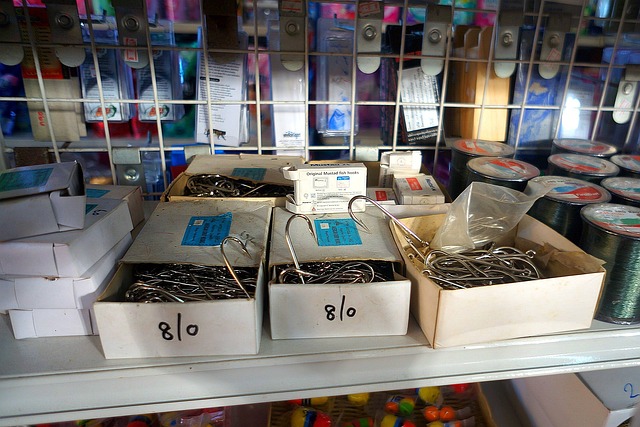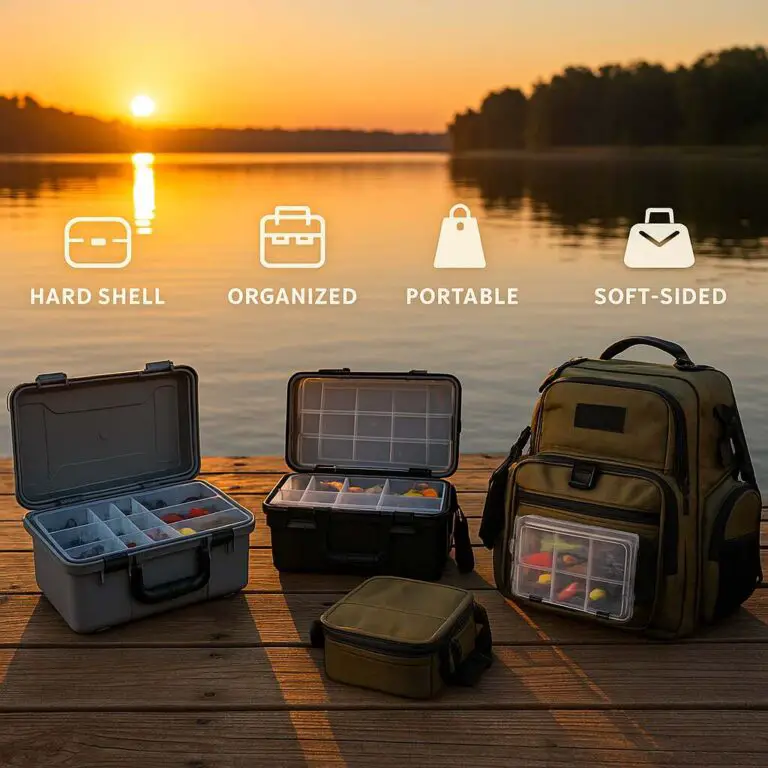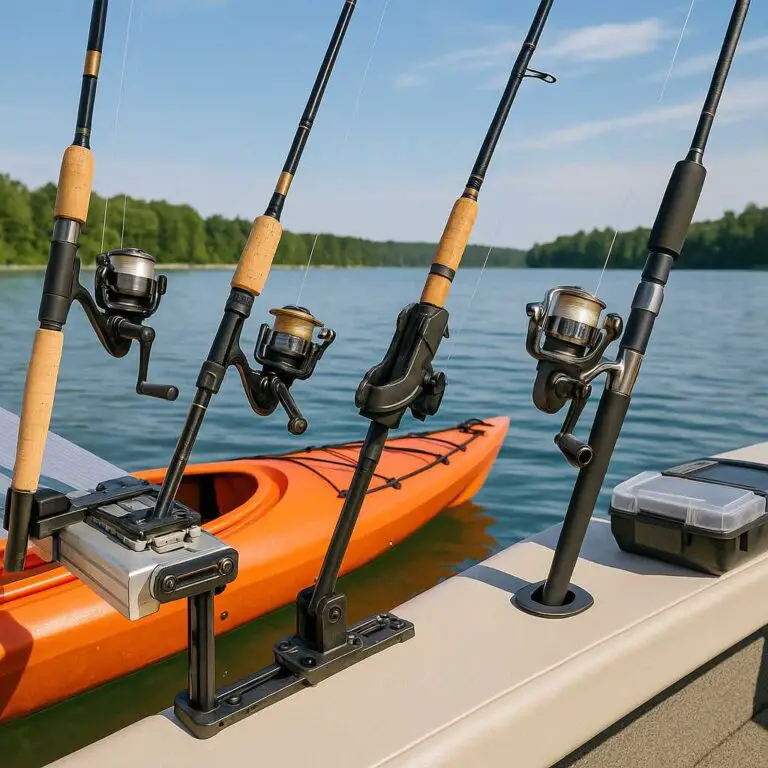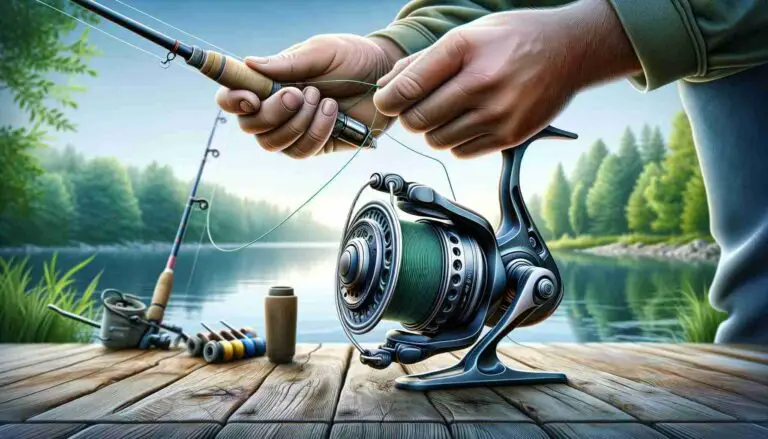Are you struggling with choosing the right size swimbait hook? Well, fret no more because I’ve got you covered! In this complete guide, I’ll walk you through everything you need to know about selecting the ideal swimbait hook size. Whether you’re targeting bass, pike, or other predatory fish, understanding hook sizing is key to optimizing your presentation and increasing your chances of hooking into those prized catches.
Understanding Swimbaits and Hooks
Swimbaits are a type of fishing lure designed to imitate the appearance and movement of real fish. They come in various shapes, sizes, and materials, such as soft plastic or hard plastic. Swimbaits are known for their lifelike action in the water, making them irresistible to predatory fish.
Hooks, on the other hand, are the sharp, curved metal components attached to the swimbait. They are responsible for securing the fish when it strikes and providing the angler with a solid hookset. Hooks have different sizes and styles to accommodate various fishing techniques and target species.
When it comes to swimbaits and hooks, it’s essential to find a harmonious balance. The right hook size ensures that the swimbait swims naturally and allows for efficient hook penetration when a fish bites. Using an incorrectly sized hook can negatively impact the presentation, reduce hooking efficiency, or even result in lost fish.
In the next sections, I’ll explore the factors that you should consider when choosing the ideal swimbait hook size.
Factors to Consider When Choosing Swimbait Hook Size
When it comes to choosing the right swimbait hook size, there are several important factors to consider. By taking these factors into account, you can ensure that your swimbait presents naturally and increases your chances of hooking into that trophy fish. Let’s explore these factors in detail:
1. Size of the Swimbaits:
The size of your swimbait plays a significant role in determining the appropriate hook size. It’s important to match the hook size to the length and weight of your swimbait. Using a hook that is too large or too small can affect the swimbait’s action and decrease your hooking efficiency. Consider the proportions and profile of your swimbait when selecting the hook size.
2. Depth and Fishing Conditions:
The depth at which you’ll be fishing and the prevailing fishing conditions also influence your hook size selection. In deeper water or heavy cover situations, using a heavier hook can help you penetrate through the water column and vegetation, ensuring a solid hookset. On the other hand, in shallower waters or open conditions, a lighter hook may be more suitable for maintaining the natural movement of the swimbait.
3. Targeted Fish Species:
Different fish species have varying mouth sizes and feeding habits, which can impact the choice of swimbait hook size. If you’re targeting larger predatory fish, such as bass or musky, you may need a larger hook to accommodate their mouth size and ensure a secure hookset. For smaller fish species, downsizing your hook can lead to more bites and better hooking rates.
4. Hook Type and Style:
The type and style of the hook can also affect the hook size selection. There are various hook designs, such as offset hooks, weighted hooks, and screw-lock hooks. Each hook style has its advantages and may require different hook sizes to optimize performance. Consider the specific requirements of your fishing technique and swimbait design when choosing the appropriate hook type and size.
Remember, these factors are not mutually exclusive, and you may need to consider a combination of them to determine the ideal swimbait hook size for your specific fishing situation. It may require some trial and error to find the perfect match, so don’t be afraid to experiment and adjust your hook size as needed.
Next, I’ll delve into the process of decoding hook sizes and types, which will further aid you in selecting the right swimbait hook size.
Decoding Swimbait Hook Sizes and Types
Decoding hook sizes and understanding the different types available is essential for choosing the right swimbait hook. Let’s dive into the world of hook sizes and types to help you make an informed decision:
Hook Size Chart
Hook sizes are typically denoted using a numbering system, such as 1/0 (pronounced “one-aught”), 2/0, 3/0, and so on. The higher the number, the larger the hook size. However, it’s important to note that hook sizing can vary between manufacturers, so it’s best to consult a hook size chart specific to the brand you’re using.
To give you a general idea, here’s an example of a hook size chart for swimbaits:
- Size 1/0 to 2/0: Suitable for smaller swimbaits, typically in the range of 2 to 4 inches.
- Size 3/0 to 4/0: Ideal for medium-sized swimbaits, typically ranging from 4 to 6 inches.
- Size 5/0 to 8/0: Used for larger swimbaits, typically 6 inches or more.
Keep in mind that this is just a rough guideline, and the specific size you choose will depend on factors like the fish species, fishing conditions, and your personal preference.
Types of Hooks for Swimbaits
There are various types of hooks designed specifically for swimbaits. Here are a few commonly used ones:
- Offset Hooks: These are the most versatile and widely used hooks for swimbaits. They feature a curved shank and an offset bend near the eye, allowing for better hooksets and reducing the chances of fish throwing the lure.
- Weighted Hooks: Weighted swimbait hooks have a lead weight molded near the hook eye. These hooks help add weight to the swimbait, allowing for a deeper presentation and better control over the lure’s action.
- Screw-Lock Hooks: These hooks have a screw-like attachment near the eye that securely holds the swimbait in place. Screw-lock hooks are popular for soft plastic swimbaits and provide excellent weedless properties.
- Underspin Hooks: Underspin hooks feature a small spinner blade attached to the underside of the hook, adding flash and vibration to the swimbait. They can be effective in murky waters or when fish are actively feeding on baitfish.
Each hook type has its advantages and is suitable for specific fishing scenarios. Consider the action you want from your swimbait, the fishing technique you’ll be using, and the conditions you’ll encounter to determine the best hook type for your needs.
Practical Tips for Choosing the Right Swimbait Hook Size
Now that I’ve covered the factors to consider and the basics of hook sizes and types, let’s delve into 5 practical tips and considerations to help you choose the right swimbait hook size:
- Experimentation and Observation: Fishing is an art, and finding the perfect swimbait hook size often requires some trial and error. Don’t be afraid to experiment with different hook sizes and observe the results. Pay attention to how fish respond to different sizes, the hookset efficiency, and the overall presentation of the swimbait. This hands-on approach will give you valuable insights and help you fine-tune your hook size selection.
- Targeted Fish Species and Mouth Size: Consider the specific fish species you’re targeting and their mouth size. Larger predatory fish like bass, pike, or musky may require larger hooks to ensure a solid hookset. On the other hand, smaller fish species may be more effectively targeted with downsized hooks that match their mouth size. Understanding the feeding habits and mouth anatomy of your target fish will guide you toward the appropriate hook size.
- Fishing Techniques and Action Desired: Different fishing techniques require different hook sizes to optimize performance. For example, if you’re fishing topwater with a floating swimbait, using a larger hook can help provide the necessary buoyancy. On the other hand, if you’re slow-rolling a swimbait at deeper depths, a heavier hook can assist in maintaining the desired action. Consider the specific fishing technique you’ll be employing and choose a hook size that complements it.
- Pay Attention to Water Depth and Fishing Conditions: Water depth and fishing conditions play a crucial role in hook size selection. In deeper waters, using a heavier hook can help the swimbait reach the desired depth and stay on target. If you’re fishing in heavy cover or around structure, a heavier hook can also help you navigate through vegetation or prevent snagging. Conversely, in shallow water or open conditions, a lighter hook may be more appropriate to maintain the natural movement of the swimbait.
- Seek Advice and Learn from Other Anglers: Don’t hesitate to seek advice from experienced anglers or join online fishing communities. Engage in conversations, ask questions, and learn from their experiences. Other anglers who have fished with similar swimbaits and target species can provide valuable insights and recommendations regarding hook size selection.
Remember, the ideal swimbait hook size is subjective and can vary based on personal preferences, fishing conditions, and the specific swimbait you’re using. Continuously adapt and adjust your hook size based on the feedback you receive from fish behavior and your own observations on the water.
Conclusion
In conclusion, what size of the swimbait hook you should use depends on several factors, including the size of the swimbait itself, the species of fish you are targeting, and the fishing conditions you’ll be facing. However, there are some general guidelines:
- Match the hook size to the swimbait: Choose a swimbait hook that is proportional to the size of the swimbait. For smaller swimbaits (2 to 4 inches), a hook size around 1/0 to 2/0 should work well. For medium-sized swimbaits (4 to 6 inches), consider using a hook size around 3/0 to 5/0. For larger swimbaits (6 inches and above), opt for hooks in the range of 5/0 to 8/0 or even larger.
- Consider the fish species: Different fish species have varying mouth sizes and feeding habits. If you’re targeting smaller species like bass or trout, you can use smaller hooks. For larger species like pike or muskie, you’ll need larger hooks to accommodate their size.
- Adapt to fishing conditions: Fishing conditions can also influence hook size selection. In clear water or when fish are being finicky, downsizing your hook may help increase your chances of getting a bite. In contrast, if you’re fishing in heavy cover or around structure where larger fish may be lurking, using a larger, stronger hook can help ensure you can land the fish and handle the tough conditions.
Remember, these are general guidelines, and you may need to adjust them based on your specific circumstances. It’s always a good idea to consult with local anglers or fishing experts who are familiar with your target species and fishing location for more precise recommendations.
With the knowledge and insights gained from this guide, you’re well-equipped to make informed decisions and maximize your fishing adventures. So, get out on the water, apply these tips, and enjoy the thrill of landing those elusive fish with the perfect swimbait hook size.
Happy fishing!
Check my last post: How Much Line To Put On A Baitcaster:








